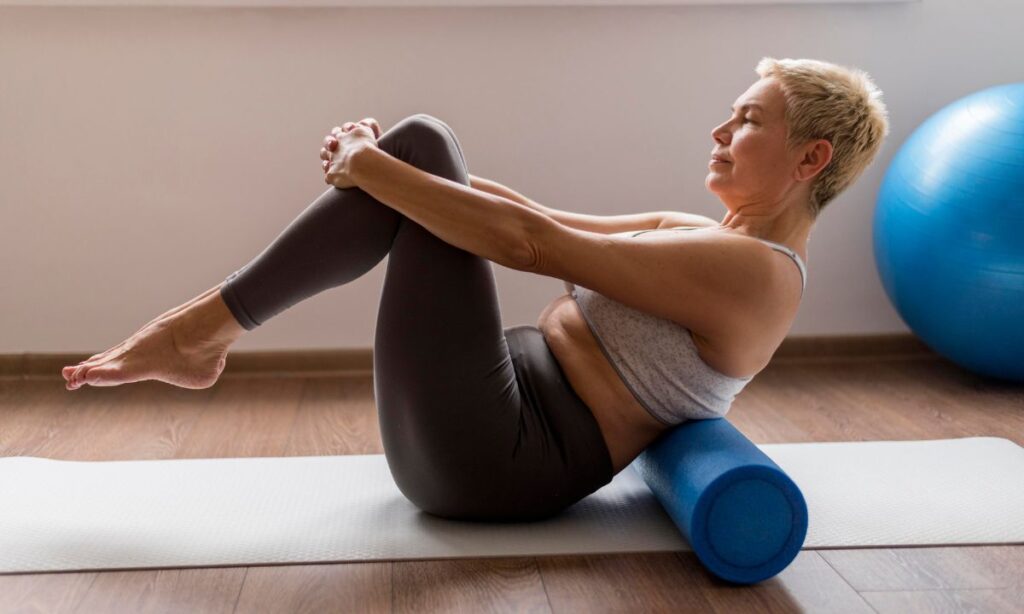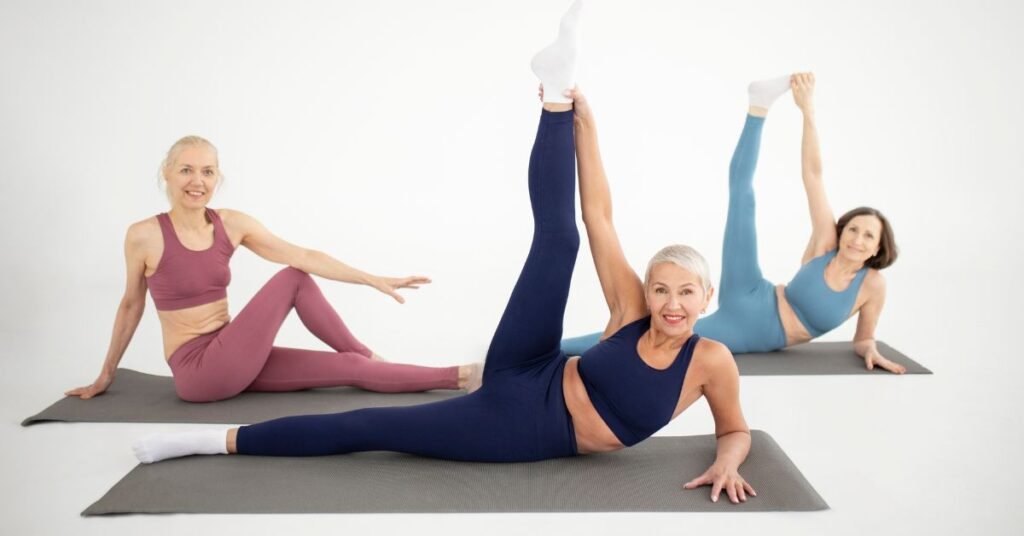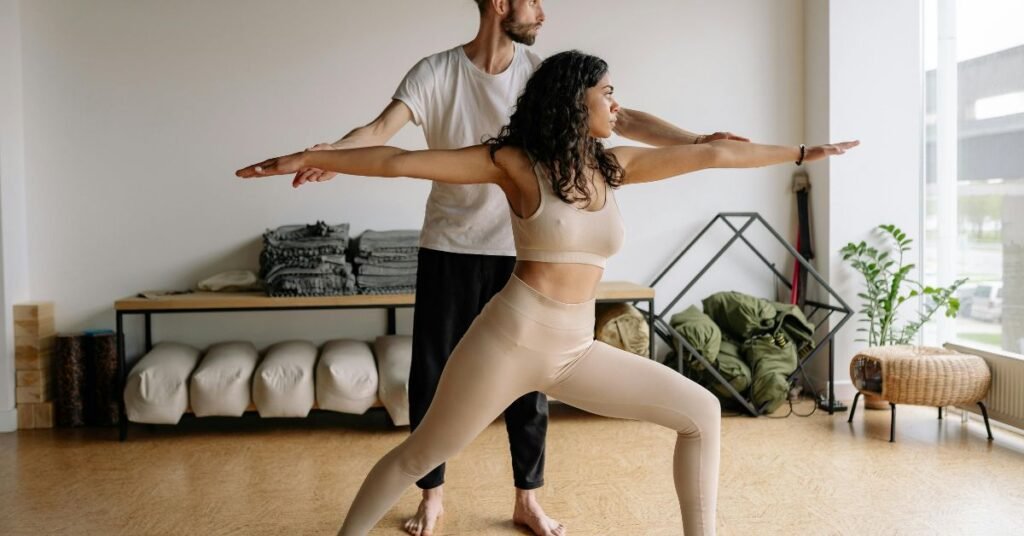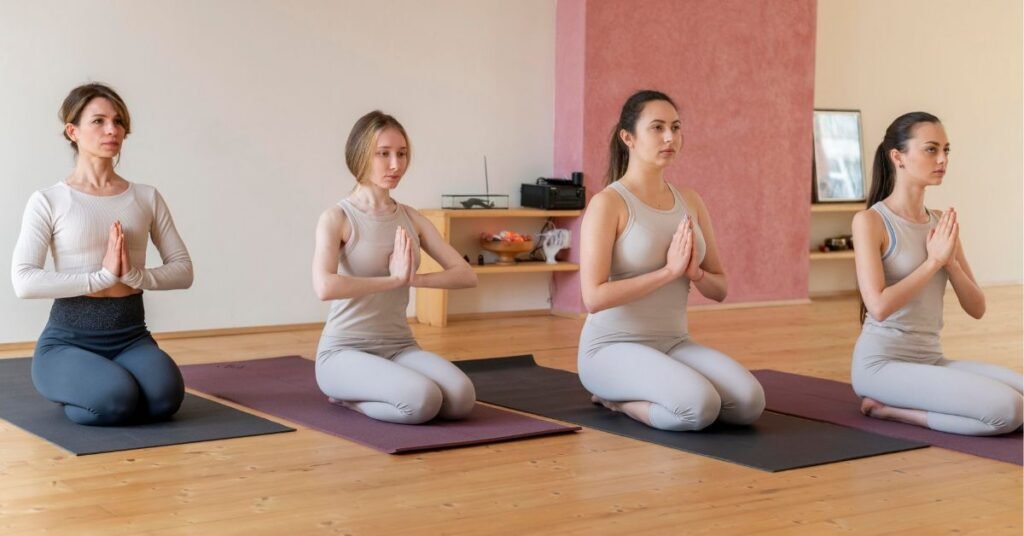Aging is a natural part of life, but that doesn’t mean we must accept stiffness, aches, and loss of mobility as inevitable. Yoga offers a powerful, gentle way to stay active, flexible, and mentally sharp as we age. Whether in your 50s, 60s, 70s, or beyond, yoga can help you feel vibrant and strong for years to come.
In this blog post, we’ll explore how yoga supports graceful aging, the best yoga practices for older adults, and tips for getting started—even if you’ve never tried yoga.
The Benefits of Yoga for Aging Gracefully
Yoga is more than just stretching; it’s a full-body practice that enhances physical and mental well-being. Here’s how it can help you age with grace:
1. Improves Flexibility and Mobility
As we get older, our joints naturally lose some of their flexibility. This can lead to stiffness, discomfort, and a reduced range of motion. Regular yoga practice helps maintain and even improve flexibility, making everyday movements—like reaching for something on a high shelf or bending down to tie your shoes—easier and more comfortable.
2. Strengthens Muscles and Bones
Weight-bearing yoga poses help maintain muscle mass and bone density, both of which tend to decline with age. Stronger muscles support better posture and balance, reducing the risk of falls and fractures. Poses like Warrior II and Tree Pose help build lower body strength and stability.
3. Enhances Balance and Coordination
Falls are a major concern as we age, but yoga can help improve balance and coordination. Practicing simple balancing poses regularly trains the body and mind to react more quickly and confidently to changes in position, reducing the likelihood of falls.
4. Supports Joint Health and Reduces Pain
Yoga’s gentle movements lubricate the joints and can help manage conditions like arthritis. Unlike high-impact exercises, yoga provides relief from stiffness without putting excessive stress on the joints.
5. Boosts Mental Clarity and Reduces Stress
Aging isn’t just a physical process—it affects the mind, too. Yoga encourages mindfulness, deep breathing, and relaxation, which can reduce stress, improve memory, and boost mental clarity. Practices like meditation and controlled breathing (pranayama) help calm the nervous system and promote a sense of peace.
6. Promotes Better Sleep
Struggling with sleep as you age? Yoga can help with that, too! Gentle evening stretches and deep breathing exercises prepare the body for restful sleep. By reducing stress and relaxing the nervous system, yoga encourages a deeper, more refreshing sleep.
7. Encourages a Positive Outlook
Yoga isn’t just about movement—it’s a lifestyle that fosters self-acceptance and gratitude. By practicing yoga regularly, many people find themselves feeling more connected to their bodies, more patient with themselves, and more appreciative of life’s small joys.
Readmore: 7 Gentle Yoga Poses Perfect for Seniors
Readmore: Yoga for Cancer Patients and Survivors
Best Yoga Practices for Seniors
Not all yoga styles are suitable for aging bodies. Here are some of the best yoga styles and practices for older adults:
1. Hatha Yoga
Hatha yoga is a slow-paced practice that focuses on foundational poses and breathing techniques. It’s a great choice for beginners and seniors looking for a gentle yet effective practice.
2. Chair Yoga
If mobility is a concern, chair yoga is an excellent option. It allows you to practice poses while seated or using a chair for support, making yoga accessible for those with limited movement or balance issues.
3. Restorative Yoga
This deeply relaxing style uses props like pillows and blankets to support the body in gentle poses. It’s perfect for relieving stress and promoting relaxation.
4. Yin Yoga
Yin yoga involves holding poses for longer periods, allowing for deep stretching and improved joint mobility. It’s a wonderful way to gently work on flexibility without putting strain on the muscles.
5. Gentle Vinyasa
For those who are comfortable with a bit more movement, a gentle Vinyasa practice connects breath with motion in a smooth, flowing sequence. It can help build strength and coordination while still being low-impact.
Readmore: Yoga for Seniors with Limited Mobility
Readmore: Yoga for Rehabilitation
Tips for Getting Started
Ready to give yoga a try? Here are some simple tips to help you begin your journey:
- Start Slow: If you’re new to yoga, ease into it with beginner-friendly classes or videos designed for seniors.
- Listen to Your Body: Never push yourself into a pose that feels painful or uncomfortable. Yoga should feel good, not forceful.
- Use Props: Blocks, straps, and blankets can provide extra support and make poses more accessible.
- Focus on Breathing: Deep, controlled breathing enhances relaxation and oxygenates the muscles.
- Stay Consistent: Even 10–15 minutes of yoga a day can make a difference in how you feel.
- Find a Supportive Community: Practicing with a group, whether in person or online, can make yoga more enjoyable and help you stay motivated.
Readmore: Yoga for Better Sleep Simple Poses
Readmore: 5 Yoga Practices to Support Trauma Recovery
Final Thoughts
Aging gracefully isn’t about avoiding wrinkles or trying to stay young forever—it’s about feeling strong, capable, and vibrant at every stage of life. Yoga offers a beautiful, gentle way to nurture both body and mind as we grow older. By incorporating yoga into your daily routine, you can move with greater ease, stay mentally sharp, and enjoy life to the fullest.
So why not roll out a mat, take a deep breath, and start your journey toward aging gracefully today? Your future self will thank you!

Sonu is a passionate yoga teacher with over 6+ years of experience helping individuals find balance, strength, and inner peace through the transformative power of yoga. As the creator of Pure Yoga Vibes, Sonu shares expert insights, inspiring practices, and a wealth of knowledge to support your wellness journey. Dedicated to creating a space for growth and mindfulness, Sonu’s mission is to make yoga accessible and enjoyable for everyone. For inquiries or collaborations, feel free to reach out at contact@pureyogavibes.com.



